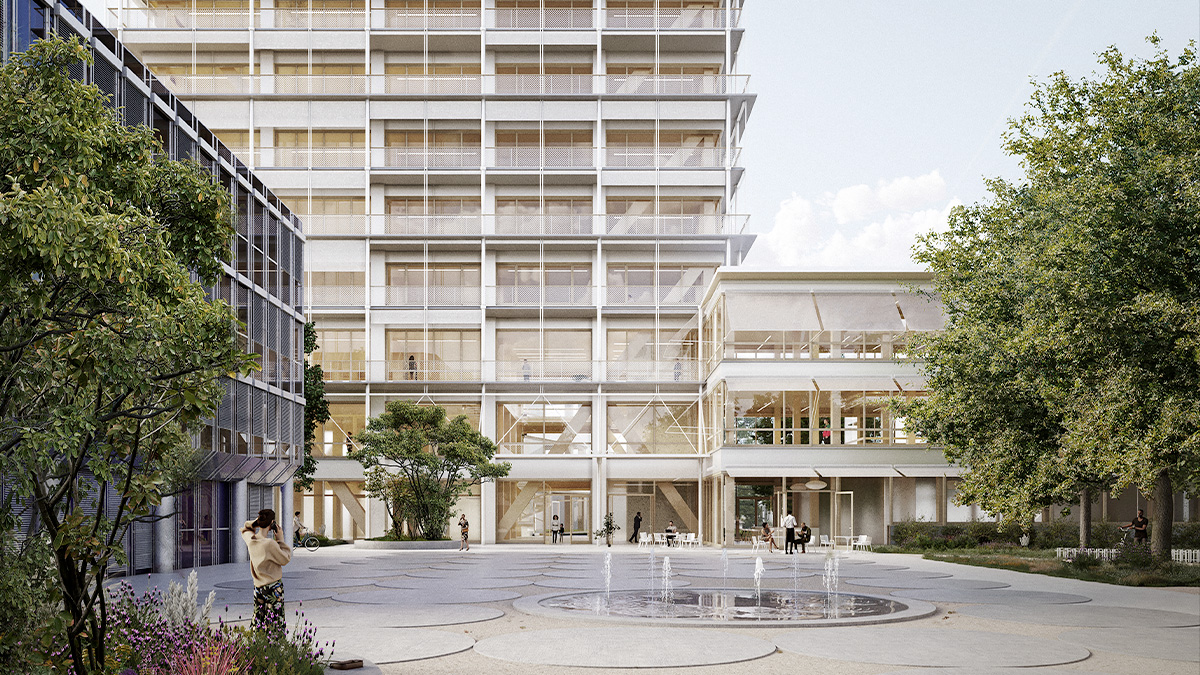Sustainability through usage flexibility A sustainable building is one with the longest possible lifespan. The key element for this is a flexible building structure that goes beyond the typical utilisation typology of the office building and provides a systemic openness that can respond to new needs of the administration. At the same time, the structure should anticipate more radical transformations, such as conversion into a residential building, from the outset.
Freely usable main building For the new administrative complex, we propose a rectangular building with two attached volumes. Each of these building sections has its own basic spatial disposition, allowing for programmatic diversity. The 14-storey main building is characterised by a continuous space with an open-plan layout, offering maximum flexibility. The main building houses the administrative offices. Its moderate column grid of 4.80 by 6.40 metres and a fit-out grid of 1.60 metres are chosen so that both efficient group offices and conversion into rooms with a clear width of three metres are possible.
By relocating the fixed ancillary rooms to the lateral core building and the three-storey wing, the entire area of the main building can remain completely empty and is freely usable. This typological arrangement facilitates the later conversion of the building, as the open main building without a restricting core can be flexibly divided. Shaft spaces for additional infrastructure can be easily retrofitted due to the arrangement of ceiling elements. Construction can also continue on the lateral core building and be adapted to new requirements.




